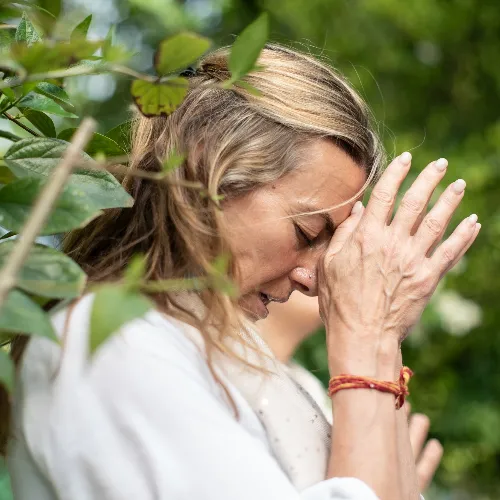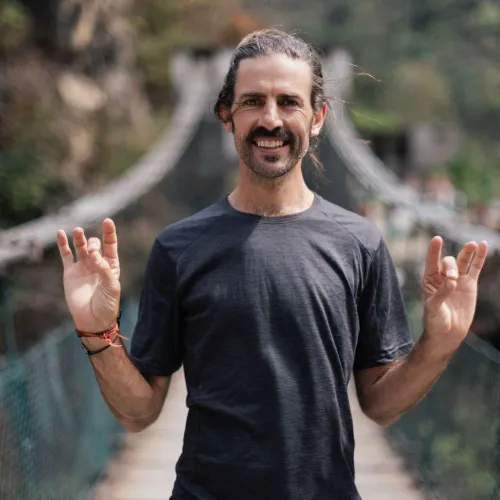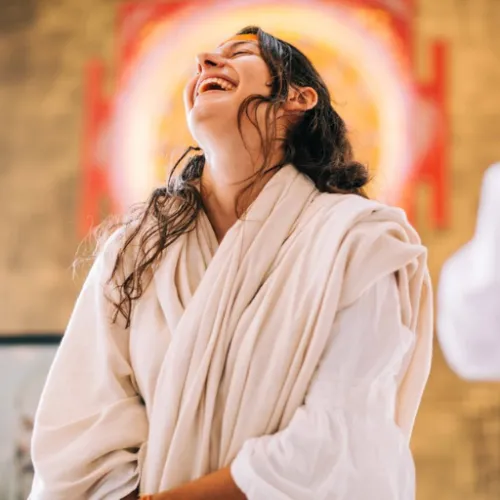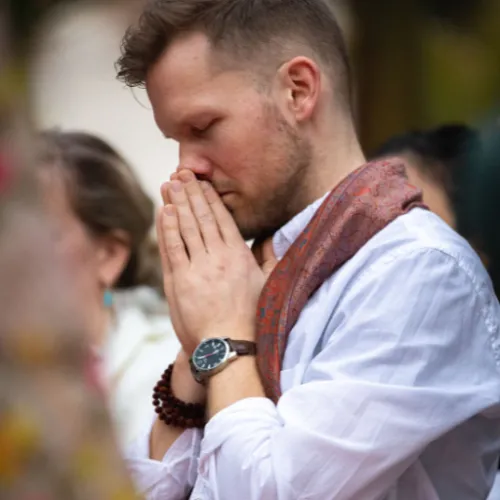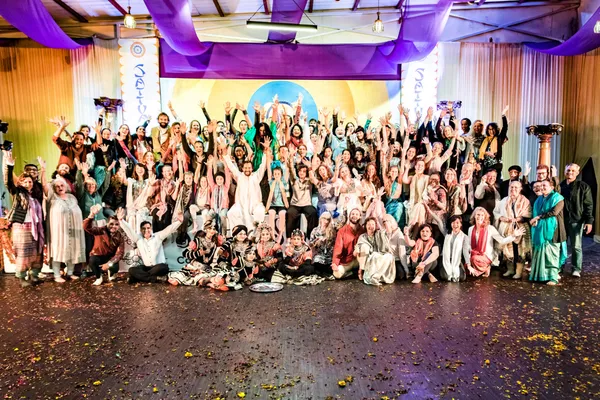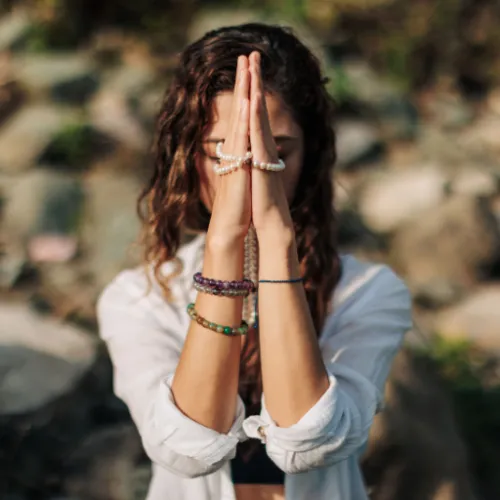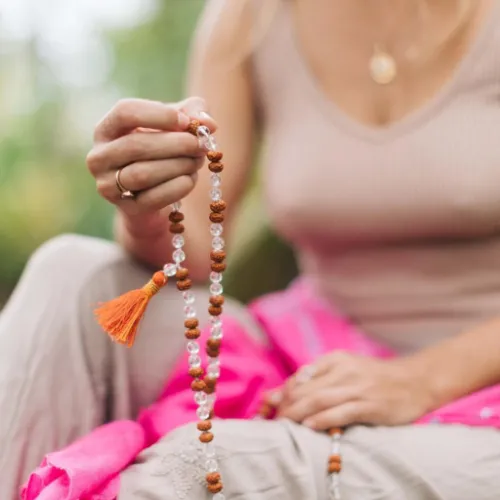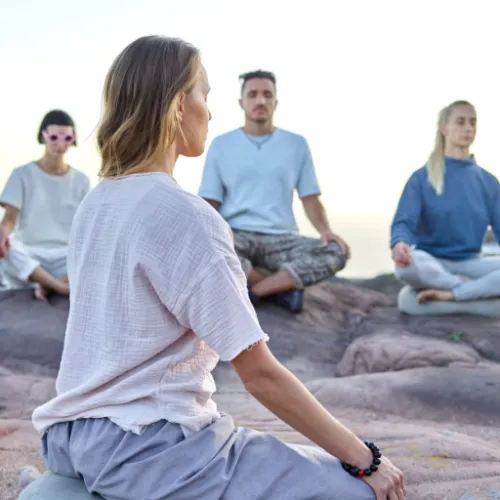


Yagya, Havana, Homa, Agni Hotra are all Sanskrit words used to describe a yagya.
A havana is a sacred fire ceremony, a part of the technology of the Vedic tradition and it is a very powerful upaya. ‘Upaya’ is a Sanskrit word meaning ‘technique to remedy or correct energetic imbalances in spaces’. In the Vedic tradition, many different types of havanas exist.
A havana is one of the most powerful things you can do for clearing a space and opening up the energy.
Havanas have been used for thousands of years in the yogic tradition, to open specific gatherings and to support in gaining intensity around an intention. When we can gather intensity around our intention, we can create from that place. That intensity itself becomes a creative force.
We do this with other yogic techniques too, but here it becomes engaged with the elemental reality. It’s an external expression of our internal yagya that we are constantly engaging in, activating our inner fire and burning the samskaras. We are influencing and pouring the intention into the flame and that flame is radiating that particular fragrance.
From the Atharva Veda, the yagya fire is an Ishta in itself. So reverential receptivity is crucial to the experience of unity in this practice. You treat the agni, the fire, as an extension of you. It is a deity that is there, at that moment. The fire is not a fire. It's a being. It's a goddess and that's how the reverence shows up, manifested as an element. She takes on that value and profound experiences are available for all those involved.
We use a yagya kunda for the ceremony. ‘Kunda’ meaning a pit, the bottomless pit, preferably made of copper, not steel.
We attach the word ‘Swaha’ at the end of each mantra, as we offer into the fire. ‘Swaha’ means “I am engaging in my intention with my full intensity. I am present.” It's a declaration of presence.
We offer samagri into the havana after completion of each mantra chant. Samagri is a sacred offering and each item included in the samagri is significant. It is sacred food for the deities, a mixture of dried herbs, roots and leaves. We offer the samagri into the havana, we do not throw it. We take it between the thumb (representing Self) and the middle and ring (Saturn and Surya) fingers and we offer it into the yagya with the palm facing up.
When to perform a yagya?
Yagyas are powerful for opening or closing a retreat or event. They can also be done in a house to rectify and clear energy. By using the five elements and the mantras, you are creating a certain resonance in the environment. Then when people enter, they can receive that.
It is also a powerful technique to ground yourself in your intention. If doing this, you can use two pieces of paper. On one piece of paper, write what it is that you are willing to let go of, to surrender, and on the other piece of paper write what it is that you are ready to bring into your life. Then offer them in turn into the fire.
Ultimately, a Havana is a sattvic ritual to increase the value of sattva in our environment.
To experience a yagya for yourself, check out the Maha Shivratri Celebrations on Sattva Connect. Cultivate intimacy with the Divine as you level up your energetic environment.
FAQs
Q1. What is Yagya?
A: Yagya, also spelled Yajna, Havan, or Homa, is a sacred Vedic ritual that involves offering sacred substances like ghee, grains, and herbs into a consecrated fire, accompanied by the chanting of mantras. It is a powerful practice to purify energies, connect with the divine, and harmonize the environment.
Q2. What are the main elements of a Yagya?
A: A traditional Yagya involves the Agni (sacred fire), Mantras (chants), Samagri (offerings), Kunda (fire pit or altar), and the utterance Swaha, signifying the surrender of offerings to the divine.
Q3. What are the spiritual benefits of Yagya?
A: Yagya is believed to cleanse negative energies, elevate consciousness, foster inner peace, and enhance spiritual growth. It serves as a medium to connect with divine energies and receive blessings.
Q4. Can Yagya be performed for personal or material goals?
A: Yes, Yagya can be performed with focused intentions to manifest desires, achieve personal growth, or purify a space. However, it is most effective when performed with sincerity, devotion, and spiritual focus.
Q5. How is Yagya relevant in modern life?
A: In contemporary practice, Yagya is adapted to purify homes, workplaces, or communities, overcome personal challenges, promote mental clarity, and maintain energetic balance, while also being a significant cultural and spiritual ritual during festivals.




















